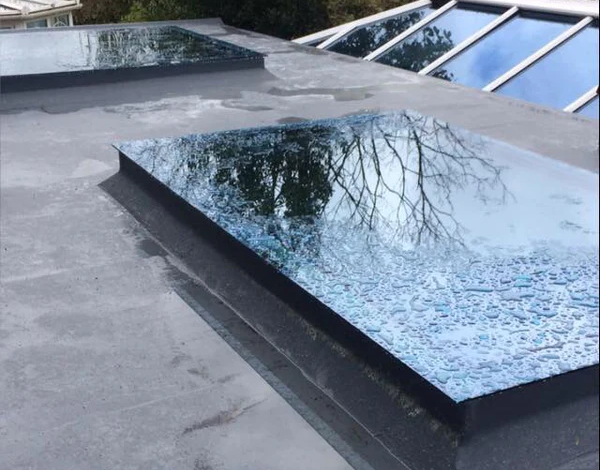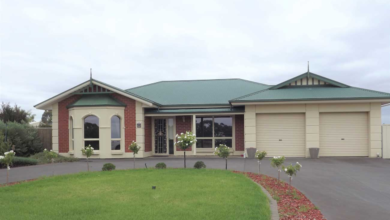Warehouse Roof Lights: Maximizing Efficiency and Natural Illumination

Warehouses are the backbone of global commerce. They store raw materials, finished goods, and everything in between, serving as vital hubs in supply chains. Yet, despite their importance, warehouses have traditionally been designed with practicality in mind, often overlooking the well-being of workers and the potential for energy efficiency. One architectural feature that is increasingly transforming warehouse design is the use of roof lights.
Warehouse roof lights, also known as skylights or roof glazing systems, are openings or structures built into the roof to allow daylight to enter the building. While this idea might seem simple, its impact is significant. From lowering energy costs to improving worker productivity, roof lights are helping turn warehouses into more sustainable, cost-effective, and people-friendly environments.
This article explores warehouse roof lights in detail: what they are, why they matter, their benefits, types, installation considerations, and the innovations shaping their future.
What Are Warehouse Roof Lights?
Warehouse roof lights are purpose-built installations designed to bring natural daylight into large industrial spaces. Unlike windows, which are limited by wall placement and building height, roof lights are positioned on the roof, where they receive maximum sunlight throughout the day. Since warehouses typically have vast floor areas and few external walls, roof lights are one of the most effective ways to illuminate interior spaces naturally.
These systems are often made from robust materials such as polycarbonate, acrylic, or reinforced glass. They may appear as continuous glazing, domes, or tubular designs, depending on the building’s requirements. Many modern roof lights feature insulation, UV protection, and energy-efficient coatings to maintain indoor comfort and minimise glare.
The Importance of Natural Light in Warehouses
Warehouses are often associated with dim, artificially lit environments. Traditional fluorescent or LED lighting provides brightness but lacks the quality and psychological benefits of natural light. Studies show that workers perform better, experience less fatigue, and report higher satisfaction when working in naturally lit spaces.
For warehouse operations, where accuracy, safety, and efficiency are crucial, lighting quality directly affects performance. Poor lighting can lead to errors in picking, mislabelling, or even accidents. Roof lights provide bright, evenly distributed illumination, supporting both productivity and safety.
Energy consumption is another key concern. Warehouses use vast amounts of electricity, much of it for lighting. By incorporating roof lights, facilities can significantly reduce their reliance on artificial lighting during daylight hours, cutting both energy use and costs.
See also: Tips for Getting Your Home Ready for the Market
Benefits of Warehouse Roof Lights
The most obvious advantage of roof lights is reduced dependence on artificial lighting. By capturing and distributing natural daylight, roof lights can lower energy bills considerably. In some cases, well-placed roof lights can reduce artificial lighting needs by up to 70% during daylight hours.
This leads directly to cost savings. Over time, the reduction in electricity usage can offset the initial installation costs, making roof lights a smart financial investment.
Natural light also improves employee well-being. It helps regulate circadian rhythms, reducing fatigue and increasing alertness. Workers in naturally lit spaces often report higher morale and lower absenteeism. For warehouses that depend on staff performing precision tasks, this improvement can boost both accuracy and output.
Roof lights also contribute to sustainability goals. Many companies aim to cut carbon emissions and comply with green building standards. By reducing energy use, roof lights help warehouses achieve environmental targets and qualify for certifications such as BREEAM or LEED.
Additionally, roof lights enhance safety. Properly illuminated spaces reduce the likelihood of accidents involving vehicles or machinery. For facilities storing valuable goods, natural light also assists in visual inspections and quality control.
Types of Warehouse Roof Lights
Warehouse roof lights come in several designs, each suited to different structures and needs.
- Continuous roof lights are long runs of glazing that provide consistent light across large spaces, ideal for expansive warehouses.
- Dome roof lights are made from polycarbonate or acrylic and positioned individually or in groups. Their shape captures sunlight from multiple directions, maintaining even light levels.
- Tubular roof lights (or sun tunnels) channel light through reflective tubing, making them suitable for smaller or hard-to-reach areas.
- Barrel vault roof lights feature curved glazing that spans wide areas, common in large logistics or industrial facilities.
- Custom roof lights can be designed for specific applications, such as those requiring extra insulation, integrated ventilation, or smart glazing technology.
Materials and Performance
The performance of roof lights depends on material quality. Polycarbonate is popular for its strength, light weight, and affordability, though it may discolour without UV protection. Acrylic offers better clarity but less impact resistance. Glass remains the premium choice, valued for its durability and superior optical quality. Many glass roof lights include low-emissivity coatings to improve insulation and block UV rays.
Frames are typically made from aluminium or steel. Aluminium is corrosion-resistant and lightweight, while steel provides strength for larger spans. Effective sealing and insulation are essential to prevent heat loss, condensation, and leaks.
Installation Considerations
Installing roof lights requires careful planning. The building’s orientation and roof light placement affect the amount and quality of daylight. North-facing units provide consistent, soft light, while south-facing ones may need shading to prevent glare and heat gain.
Energy efficiency should be prioritised. Roof lights with multiple glazing layers and insulated frames reduce unwanted heat transfer, which is vital in temperature-controlled environments.
Safety compliance is essential. Roof lights must meet fire, wind, and snow load standards and often need integrated fall protection for maintenance access. Professional installation helps prevent issues such as leaks or structural weaknesses.
Maintenance is also important. Roof lights should be cleaned periodically and inspected for damage, seal failures, or condensation. Durable, factory-sealed designs reduce long-term maintenance needs.
Applications in Warehouses
Roof lights can be applied in various warehouse settings. General-purpose warehouses benefit from lower lighting costs. Distribution centres gain improved visibility for accurate handling. Cold storage facilities can use insulated roof lights to balance daylight with temperature control.
Automated warehouses, combining robotics and human activity, benefit from improved visibility and safety. In customer-facing warehouses or showrooms, natural light creates a welcoming atmosphere and enhances product presentation.
Challenges and Limitations
Despite their advantages, roof lights can present challenges. Poor design may cause glare, overheating, or uneven lighting. In cold climates, inadequate insulation may cause heat loss, while in warmer ones, solar gain may raise cooling costs.
Leaks can occur if installation is substandard, and maintenance, though minimal, must be consistent. The initial investment can also be high, but long-term savings in energy and productivity often outweigh the cost.
The Future of Warehouse Roof Lights
As sustainability takes centre stage, innovations are driving roof light development. Smart roof lights that adjust transparency according to sunlight are already available. Electrochromic glazing can automatically tint to control glare and solar gain.
Some systems now integrate solar panels, generating renewable energy while providing light. This approach aligns perfectly with warehouses aiming for net-zero energy goals. Companies like Skylights Roof Lanterns are leading the way with advanced materials and integrated solar technologies that combine aesthetics and efficiency.
Biophilic design is another growing trend, using roof lights to connect indoor workers with natural light and outdoor views. Future designs may use lighter composites and even 3D-printed elements for greater flexibility and lower costs.
Cost and Return on Investment
The cost of roof lights varies depending on size, material, and design. Simple dome systems are affordable, while large continuous or barrel vault designs are more expensive. Installation costs depend on the roof structure and accessibility.
However, the return on investment is strong. Energy savings can repay installation costs within a few years. When combined with improved productivity, safety, and sustainability compliance, roof lights become one of the most valuable upgrades for warehouses. Choosing solutions from trusted providers like Skylights Roof Lanterns ensures durability, efficiency, and long-term performance.
Conclusion
Warehouse roof lights are more than architectural additions; they are investments in efficiency, safety, and sustainability. By harnessing natural daylight, they reduce energy consumption, enhance working conditions, and deliver measurable cost savings. In today’s competitive market, where operational efficiency is vital, roof lights offer a practical way to improve both performance and employee well-being.
With advances in smart technology, solar integration, and sustainable design, the future of warehouse roof lighting is brighter than ever. For businesses looking to modernise their facilities responsibly, roof lights are not just an upgrade they are a necessity.





